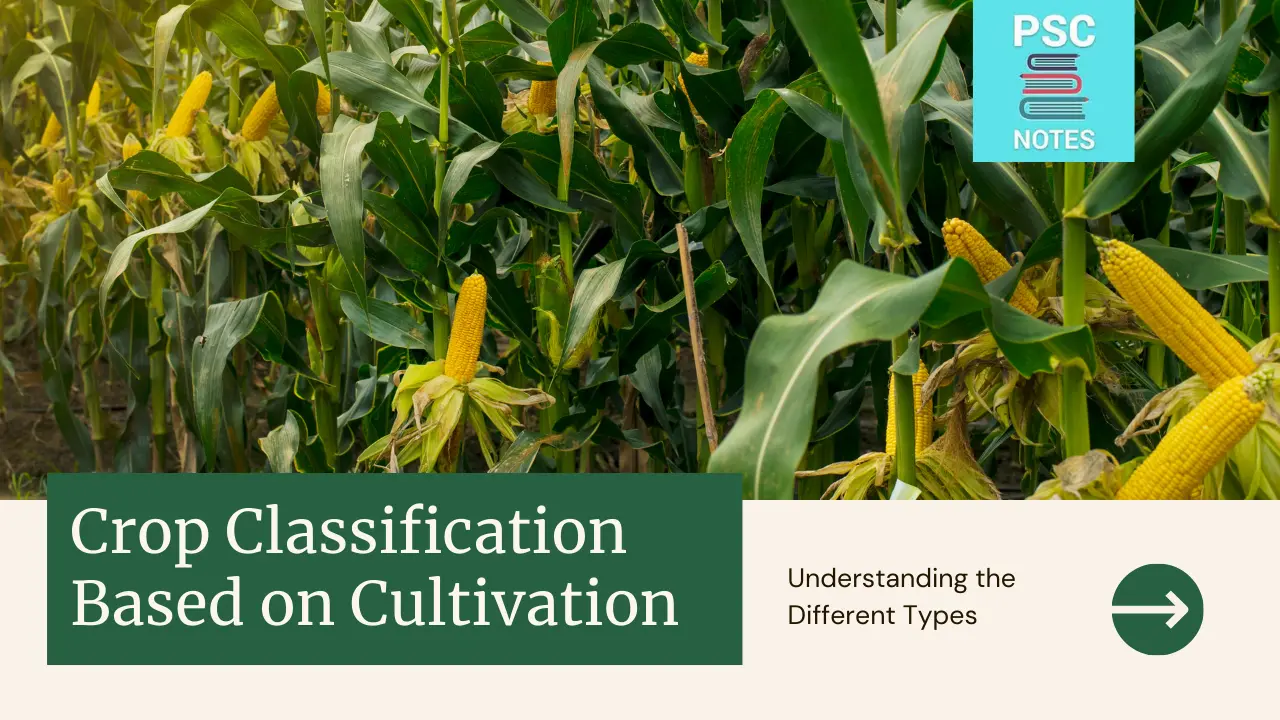<<<-2a Classification of Crops Based on Cultivation patterns and needs, plays a crucial role in streamlining agricultural practices and enhancing crop management. Crops are plants that are grown for food, fiber, fuel, or other products. They are classified into different groups based on their cultivation methods.This systematic approach aids farmers in scheduling their cultivation activities, efficiently utilizing resources, and maximizing harvests. Below are the main classifications within this framework:
Seasonal Categories
- Monsoon or Kharif Crops: Sown with the onset of the monsoon, around June to July, these crops are harvested at the monsoon’s end, approximately September to October. Rice, maize, and MilletsMillets like sorghum and pearl millet are typical examples.
- Winter or Rabi Crops: These are planted towards the rainy season’s end or the start of winter, around October to November, with the harvest season in spring, from March to April. Wheat, barley, and legumes such as peas are common.
- Intermediate or Zaid Crops: Cultivated during the brief interlude between the rabi and kharif periods, these summer season crops include watermelon, cucumber, and various seasonal vegetables and fodders.
Duration-wise Classification of Crops
- Short-term Crops: With a lifecycle under six months, this group includes numerous vegetables and grains like peas and green grams.
- Medium-term Crops: These crops, including several pulses and certain rice varieties, take between 6 to 10 months to mature.
- Long-term Crops: Taking over 10 months to grow, this category encompasses crops like sugarcane and certain types of coffee and tea.
Utility-based Classification of Crops
- Crops for Consumption: Primarily raised for human consumption, this group consists of grains (e.g., wheat, rice), legumes (e.g., lentils, chickpeas), and root vegetables (e.g., potatoes, cassava).
- Profit-oriented Crops: These are grown with the intention to sell for profit, including CottonCotton, tobacco, and sugarcane.
- LivestockLivestock Feed Crops: Specifically cultivated to feed animals, this category includes various GrassesGrasses and legumes like alfalfa.
- Textile Crops: Grown for their fibers, used in textiles and other products, examples include cotton, jute, and hemp.
- Oil-producing Crops: Cultivated mainly for their oil, used in cooking and industrial applications, such as sunflower, soybean, and canola.
Agronomical Classification of Crops
- Grain Crops: These are grasses planted for their edible seeds, such as rice and maize.
- Leguminous Crops: Known for their ability to fix atmospheric nitrogen, these crops provide protein-rich seeds, including beans and lentils.
- Seed Oil Crops: These are harvested for their oil content, including sunflower and mustard.
- Commercial Crops: Grown for industrial use or export, this category includes cotton (for fiber) and sugarcane (for sugar).
- Garden Crops: This group encompasses fruits, vegetables, and ornamental plants, valued for their nutritional content and aesthetic appeal.
Frequently asked questions
What are the different types of crops?
Crops can be classified into different groups based on their cultivation methods, life cycle, stem type, and purpose.
What are the most common types of crops?
The most common types of crops are Food Crops, fiber crops, fuel crops, and other crops.
What are the benefits of growing crops?
There are many benefits to growing crops, including providing food, fiber, fuel, and other products. Crops also help to improve SoilSoil quality, prevent erosion, and regulate the climate.
What are the challenges of growing crops?
There are a number of challenges associated with growing crops, including pests, diseases, WeedsWeeds, and drought. Crops are also susceptible to the effects of Climate Change.
What are some sustainable practices for growing crops?
There are a number of sustainable practices that can be used to grow crops, including Crop Rotation, cover CroppingCropping, and IntercroppingIntercropping. These practices help to improve soil health and reduce the use of pesticides and fertilizers.
MCQs
- Which of the following is not a type of crop?
(A) Food crop
(B) Fiber crop
(CC) Fuel crop
(D) Woody crop - Which of the following is a perennial crop?
(A) Corn
(B) Wheat
(C) Rice
(D) Apple tree - Which of the following is a food crop?
(A) Cotton
(B) Flax
(C) Corn
(D) Sugarcane - Which of the following is a fiber crop?
(A) Cotton
(B) Flax
(C) Corn
(D) Sugarcane - Which of the following is a fuel crop?
(A) Corn
(B) Soybeans
(C) Sugarcane
(D) All of the above - Which of the following is an example of a sustainable practice for growing crops?
(A) Crop rotation
(B) Cover cropping
(C) Intercropping
(D) All of the above
